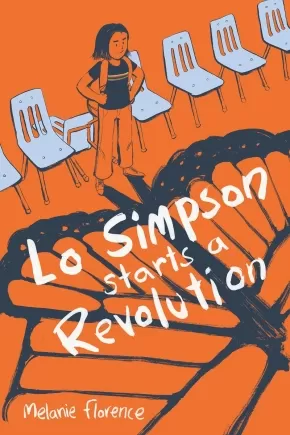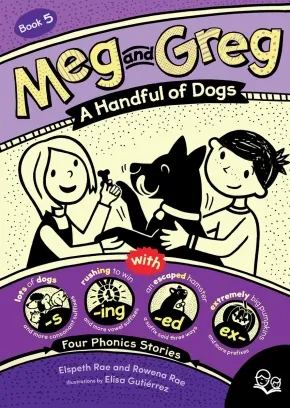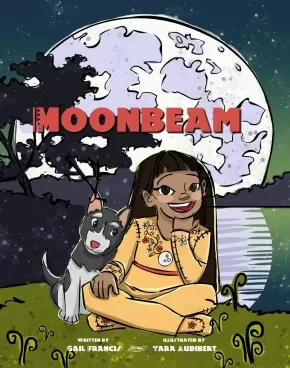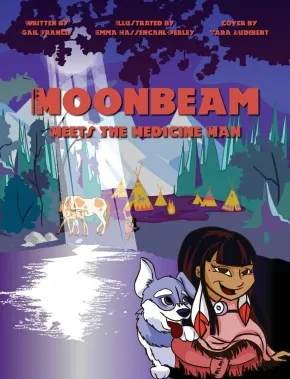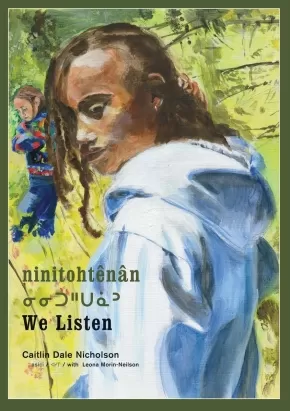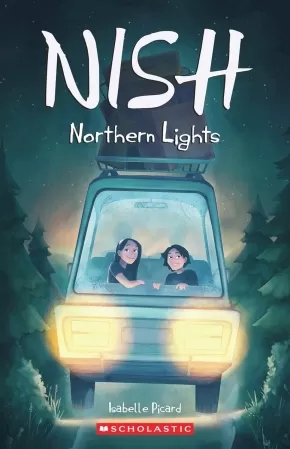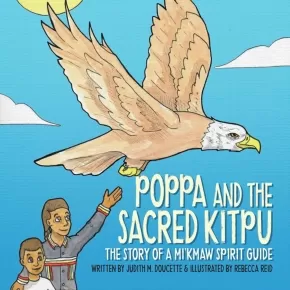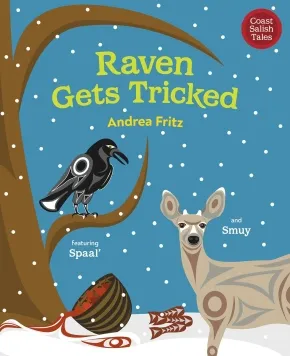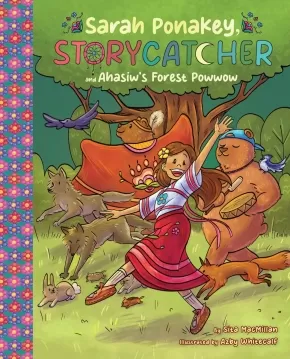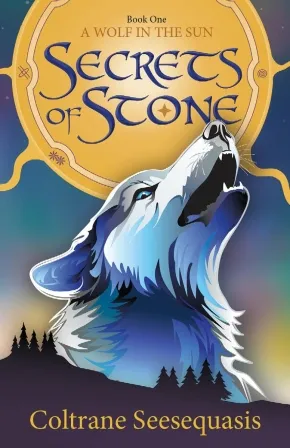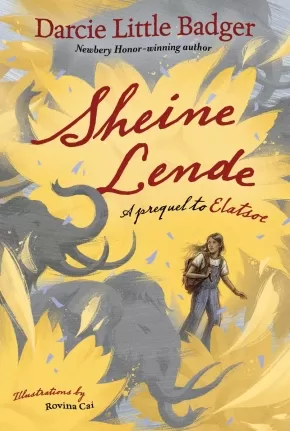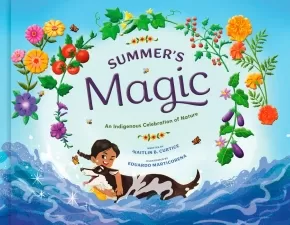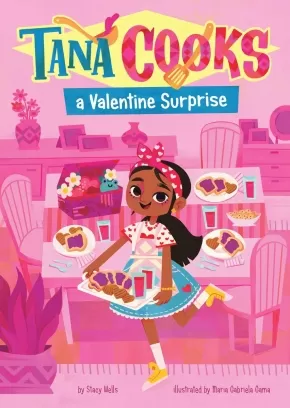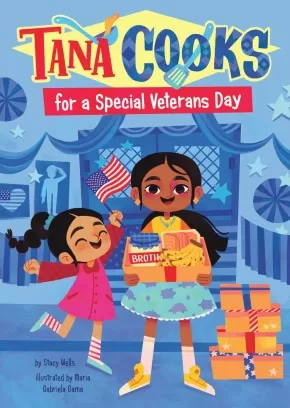
Series
76
-
90
of
400 Results;
Sort By
Go To
of 27
Lo Simpson Starts a Revolution
$14.95
Format:
Paperback
ISBN / Barcode: 9781459838505
Synopsis:
Synopsis:
In this funny yet moving coming-of-age novel, a girl finds comfort, and eventually her voice, by writing letters to The Doctor from her favorite TV show, Doctor Who.
Lo and Jazz have been best friends ever since Jazz defended her when Bobby Zucker called her a horse face in second grade. But lately Jazz has seemed more interested in bikinis, boys and bras (ugh), and Lo is still perfectly happy with her comic books and Doctor Who. When Jazz ditches Lo for the It Girls, Lo feels completely adrift...until she overhears someone talking about the latest FanCon. There are others like her!
With help from her new friends, and taking a cue from the Doctor (in whom she confides by writing letters), Lo begins to find her voice. Between giving Bobby Zucker a wedgie for harassing the It Girls, to bringing an abrupt end to spin-the-bottle at a party, to speaking up to the principal and demanding period supplies in student bathrooms, Lo finds her inner activist and the self-confidence that comes with growing up—on her own terms.
Educator & Series Information
Recommended for ages 9 to 12.
Themes / Subjects: Friendship stories; Self-awareness and self-esteem; Coming of age; Activism.
This book is part of the Lo and Jazz series.
Additional Information
216 pages | 5.00" x 7.50" | Paperback
Meg and Greg: A Handful of Dogs
$16.95
Artists:
Format:
Paperback
ISBN / Barcode: 9781459838239
Synopsis:
Synopsis:
A decodable book featuring four phonics stories for striving readers, with special features to help children with dyslexia or other language-based learning difficulties find reading success.
Meg and Greg are back to school and ready for fall fun! Join Meg, Greg and friends as they plan an event for dogs at the fall fair, solve challenging clues in a scavenger hunt, complete their planned science-fair project and look after excitable kindergarteners at the pumpkin patch.
Meg and Greg: A Handful of Dogs is the fifth book in the Meg and Greg series designed for shared reading between a child learning to read and an experienced reader. The four stories inside introduce different types of suffixes and prefixes (consonant suffixes -ful -ly -ment -s, vowel suffixes -en -er -es -est -ing -y, the suffix -ed and prefixes de- dis- ex- in- pre- re- un-) and the spelling rules for adding them to base words. In addition to the familiar comic-style kids’ pages, Book 5 features new highly controlled and decodable prose pages to gently increase the amount of text that readers experience and to provide even more opportunities to practice the reading skills previously introduced in Meg and Greg Books 1–4!
Educator & Series Information
Recommended for ages 6 to 9.
This book includes features to accommodate struggling or dyslexic readers, such as comic-book-style illustrations, a dyslexia-friendly typeface with ample spacing and shaded paper to reduce contrast between text and paper—all of which make this series more accessible.
Targeted at struggling readers ages six to nine has a wide appeal to ELL readers, reluctant readers and at-level readers alike with its engaging and age-appropriate plots and low reading level that doesn’t demoralize or stigmatize struggling readers.
This is the fifth book in the Orca Two Read series, designed for shared reading between a child learning to or struggling to read and an experienced reader. All of the stories have special features to help a child with dyslexia or another language-based learning difficulty find reading success.
Additional Information
160 pages | 5.87" x 8.25" | Paperback
Moonbeam
$14.95
Format:
Paperback
Text Content Territories:
Indigenous Canadian; First Nations; Wolastoqiyik (Maliseet);
ISBN / Barcode: 9781777854294
Synopsis:
Synopsis:
How did you get your name? Who named you? Why were you given your name? How do we name our children? Using the traditional practice of naming children, this first story about Moonbeam is the story of how she got her name. She tags along with her mother Morning Star to deliver a baby and she tries to guess the new baby’s name.
Awards
- 2020 Dr. Marilyn Trenholme Literacy Award for Outstanding Effort in Indigenous Literacy winner
- 2023 Lieutenant-Governor's Award for High Achievement in the Arts
Reviews
“This altogether lovely story takes us into the heart of family and community. The naming of things is the claiming of things. The arrival and naming of a child is celebration!” - Sheree Fitch – Canadian Author
Educator & Series Information
Recommended for ages 4 to 10.
This book is the first book in the Moonbeam series, followed by Moonbeam Meets the Medicine Man.
Additional Information
28 pages | 7.28" x 9.25" | Paperback | 2nd Edition
Moonbeam Meets the Medicine Man
$22.95
Format:
Hardcover
Text Content Territories:
Indigenous Canadian; First Nations; Wolastoqiyik (Maliseet);
ISBN / Barcode: 9781998223091
Synopsis:
Synopsis:
Traditionally, the Medicine Man was a healer that people in the village would consult in times of spiritual or physical need. When Moonbeam starts to have nightmares, her friends introduce her to the Medicine Man who gives her a helpful gift.
Educator & Series Information
Recommended for ages 6 to 9.
This book is part of the Moonbeam series, following the first book Moonbeam.
Additional Information
6" x 9" | Hardcover
ninitohtênân / We Listen
$21.99
Artists:
Format:
Hardcover
Text Content Territories:
Indigenous Canadian; First Nations; Cree (Nehiyawak);
ISBN / Barcode: 9781773068596
Synopsis:
Synopsis:
The third book in the Nôhkom series, in Cree and English, tells a story about gathering leaves for Labrador tea, while listening in different ways.
A child, her family and her friend have arrived at their favorite picnic spot by the lake, but before they eat lunch Nôhkom suggests they pick leaves for Labrador tea. Once among the trees, Nôhkom pauses for a moment to listen, and the others do too. Nôhkom prays, the girls take their turn, then Nôhkom shows them where to find the leaves. Nôhkom and Mom rest after harvesting, but the girls opt for a swim in the lake ... though they're quite happy to warm up afterwards with freshly brewed Labrador tea. And when it's time for the picnic, the girls take another turn at listening.
Beautifully rendered paintings in acrylic on canvas show the family outing. Includes a recipe for Labrador tea as well as a salve made from Labrador Tea leaves.
Educator Information
Recommended Ages: 3 to 7.
Written in short sentences in Cree and English (with Cree text appearing in standard roman orthography and syllabics), the book is a good choice for beginning readers and/or language learners.
This book is the third book in the Nôhkom series.
The story features different forms of listening — in the bush, to teachings from Nôhkom, to the conversation of family and friends (when listening can be especially fun!).
Key Text Features
illustrations
recipe
informational note
Correlates to the Common Core State Standards in English Language Arts:
CCSS.ELA-LITERACY.RL.1.2
Retell stories, including key details, and demonstrate understanding of their central message or lesson.
CCSS.ELA-LITERACY.RL.1.7
Use illustrations and details in a story to describe its characters, setting, or events.
Authenticity Note: Translator Leona Morin-Neilson is the inspiration for the stories and art in the Nôhkom series, which highlights her traditional knowledge of the uses of wild plants. She collaborated with the author to create this work and translated it into Cree.
Because of the collaboration between Leona and the author, and Leona's Cree translation, this book has been labelled as containing Authentic Indigenous Text. It is up to readers to determine if this work is authentic for their purposes.
Additional Information
24 pages | 8.50" x 12.25" | Hardcover
Nish: Northern Lights
$14.99
Format:
Paperback
Text Content Territories:
Indigenous Canadian; First Nations; Innu (Montagnais-Naskapi);
ISBN / Barcode: 9781039704558
Synopsis:
Synopsis:
The second book in Isabelle Picard’s bestselling coming-of-age series about Innu twins, Leon and Eloise.
Leon and Eloise are 13-year-old twins from Matimekush, an Innu community in Northern Quebec.
The entire Mckenzie family has moved to Wendake, near Quebec City. Leaving Matimekush, nature, their friends and their school is quite a challenge for Eloise and Leon. Between the adapting to a different world, their desire to make new friends and the need to keep their bond with the old ones, everything goes too fast.
At school, a student bullies Eloise, and she has to deal with this difficult situation. As for Leon, he starts doubting his hockey skills: Is he really talented or was he the best in Matimekush only because the competition simply wasn’t as strong? In the midst of this storm, Leon and Eloise can always count on each other as well as their family and friends.
The Mystery unfolds on every page as we get to see the twins in a different light. What if, ultimately, life in the South isn’t that different from life in the North?
Educator & Series Information
Recommended for ages 10 to 14.
Translated by Kateri Aubin Dubois, a freelance translator and a prolific beadworker. Her beadwork can be found under her Indigenous name, Nisnipawset. Kateri is from the Wolastoqiyik Wahsipekuk First Nation. She lives with her husband, two children and a fluffy cat in Terrebonne, Quebec.
This is the second book in the Nish series.
Additional Information
296 pages | 5.00" x 7.75" | Paperback
Poppa and the Sacred Kitpu
$18.95
Artists:
Format:
Paperback
Text Content Territories:
Indigenous Canadian; First Nations; Mi'kmaq;
ISBN / Barcode: 9781774571859
Synopsis:
Synopsis:
After being invited into his grandson’s school to share his wisdom and knowledge of his traditional Mi’kmaw culture in Poppa and His Drum, Poppa is happy to return as a respected Indigenous Elder and Knowledge Keeper.
In this second book of the Poppa series, we find Poppa giving his next gin’masuti (lesson in our culture) to his grandson, François, and his friends, Paul and Joe.
The boys have an important art project to complete for school and are not sure what to do. While spending the afternoon on a beach adventure with Poppa, the boys get to learn about the Sacred Kitpu (Bald Eagle) and why it’s so important to our Indigenous People.
Poppa engages the children with eager imaginations of how the Sacred Kitpu is not only a powerful spirit guide, but also represents the Spirit of the Creator among us. It is the messenger between Mother Earth and the Spirit World, whispering to the Creator our prayers, touching the face of the Creator with its wing.
Poppa teaches the children through mystic wonder how we use the Sacred Kitpu feather in many different cultural ceremonies. He embraces their eagerness to learn and shares the tradition of smudging, using the Kitpu feather along with Sacred Medicines that burn in a smudge bowl to purify our body, mind, and spirit.
The children delight in discovering Poppa’s never-spoken-of regalia treasures that once belonged to his grandfather and decide to commemorate their art project to the Sacred Kitpu.
Poppa is invited back to the class to award the winning medal to the winners of the arts project. He is proud to present the medals to happy children who truly understand and appreciate the importance of the role the Sacred Kitpu plays in our Mi’kmaw culture and heritage. Poppa and the Sacred Kitpu will delight and surprise the reader with fun and teachings given by the love of a Poppa who is cherished by his community for being such a wonderful Mi’kmaw Elder.
Educator & Series Information
Recommended for ages 5 to 12.
This book is the second book in the Poppa series, following Poppa and His Drum.
Additional Information
9.00" x 9.00" | Paperback
Raven Gets Tricked
$21.95
Artists:
Format:
Hardcover
Text Content Territories:
Indigenous Canadian; First Nations; Salish; Coast Salish; Lyackson ;
ISBN / Barcode: 9781459836273
Synopsis:
Synopsis:
Sharing is the heart of friendship.
Indigenous artist and storyteller Andrea Fritz tells a tale of a greedy raven and the little deer who makes sure they both have enough food for the winter.
Smuy the little deer is almost out of food and wishes Spaal' the raven would share with him. But even though Smuy always offers to share with Spaal', Spaal' only ever tricks Smuy in return. So Smuy decides to try something new. He mashes the last of his stored berries and mixes them into the snow outside. Spaal' notices the delicious-looking red snow and asks to taste some. Smuy agrees, but this time he is prepared for Spaal's tricks and is ready with a little trick of his own—one that will ensure that both animals are warm and fed for the winter.
In this Traditional Story set in Coast Salish Traditional Territory, author and artist Andrea Fritz uses Indigenous storytelling techniques and art to share the culture and language of the Hul’q’umi’num’-speaking Peoples. This is the third book in the Coast Salish Tales, following Otter Doesn't Know and Crow Helps a Friend.
Educator & Series Information
Recommended for ages 6 to 8.
This is the third book in the Coast Salish Tales series, following Otter Doesn't Know and Crow Helps a Friend.
Fountas & Pinnell Text Level Gradient: N
Lexile measure: 530L
Guided Reading Level: N
Additional Information
32 pages | 8.75" x 10.75" | Hardcover
Sarah Ponakey, Storycatcher and Âhâsiw's Forest Powwow
$10.99
Artists:
Format:
Paperback
Text Content Territories:
Indigenous Canadian; First Nations; Cree (Nehiyawak);
ISBN / Barcode: 9781773218892
Synopsis:
Synopsis:
A vibrant debut early chapter book series celebrating Cree culture and being true to yourself.
Sarah Ponakey has moved to the city from her home community with her mom and it’s the pits! She misses her Kôhkom, her best friend Eden, and the forests around her community. She’s had a hard time making new friends at school but at least she keeps in touch with Eden through meticulously written letters with very big words. After a particularly tough day where she nearly loses her favorite stuffed animal, Âhâsiw, and is brushed off by her mom, Sarah finds herself transported to a magical forest powwow . . .
Accompanied by a life-sized Âhâsiw in his beautiful regalia, Sarah watches in excitement as a chipmunk emcees, and bears play the host drum at her first ever powwow. The more she sees, the more her confidence grows. As she joins in the celebration, Sarah discovers that she can connect to her Cree culture no matter where she is. Her Kôhkom’s going to love this story! Âhâsiw’s Forest Powwow, the first book from debut children’s author Sita MacMillan, features Cree words throughout the story and a note to the reader. Azby Whitecalf’s dynamic illustrations bring life to this warm, charming, and funny introduction to Sarah Ponakey, the storycatcher.
Educator & Series Information
Recommended for ages 6 to 9.
This is the first book in the Sarah Ponakey, Storycatcher series, a vibrant debut early chapter book series celebrating Cree culture and being true to yourself.
Additional Information
120 pages | 6.00" x 9.00" | Paperback
Secrets of Stone
$25.00
Format:
Paperback
Text Content Territories:
Indigenous;
ISBN / Barcode: 9781928120421
Synopsis:
Synopsis:
Centuries have passed since the forces of nature won the war against humanity. Sentient animals now rule a healing world, and as the stain of mankind continues to dwindle, a young wolf called Silversong is determined to rise in the hierarchy of his pack. Strong at manipulating wind and air, all he needs is a way to prove himself to his Chief.
Before he can get the respect he deserves, however, Silversong's aspirations are cut short by the Heretic and his outcast wolves. Against all odds, the Heretic and his band of exiles escape their imprisonment far to the west and wreak havoc on Silversong's pack. The exiles pose a threat unlike any other, and their enigmatic leader won't stop his brutal conquest until all wolfkind submits to him.
Silversong can't let a monstrous wolf like the Heretic roam free. With the wind at his back, he pursues the leader of the exiles into forests of shadow and into ancient places better left forgotten. But the further he strays from home, the more he comes to realize that maybe his enemies aren't so evil after all. Maybe there's a reason for the destruction they seek... and maybe there's a far greater danger lying in wait.
Educator & Series Information
Recommended for ages 13 to 17.
This is the first book in the Wolf in the Sun series.
Additional Information
243 pages | 5.50" x 8.50" | Paperback
Sheine Lende (HC) (7 in Stock)
$29.99
Format:
Hardcover
Text Content Territories:
Indigenous American; Native American; Apache; Lipan Apache Tribe of Texas;
ISBN / Barcode: 9781646143795
Synopsis:
Synopsis:
Shane works with her mother and their ghost dogs, tracking down missing persons even when their families can’t afford to pay. Their own family was displaced from their traditional home years ago following a devastating flood – and the loss of Shane’s father and her grandparents. They don’t think they’ll ever get their home back.
Then Shane’s mother and a local boy go missing, after a strange interaction with a fairy ring. Shane, her brother, her friends, and her lone, surviving grandparent – who isn’t to be trusted – set off on the road to find them. But they may not be anywhere in this world – or this place in time.
Nevertheless, Shane is going to find them.
Darcie Little Badger’s Elatsoe launched her career and in the years since has become a beloved favorite. This prequel to Elatsoe, centered on Ellie’s grandmother, deepens and expands Darcie’s one-of-a-kind world and introduces us to another cast of characters that will wend their way around readers’ hearts.
Educator & Series Information
Recommended for ages 12 to 18.
This book is part of the Elatsoe series.
Additional Information
400 pages | 5.50" x 8.25" | Hardcover
Sometimes I Feel Like an Oak
$19.99
Artists:
Format:
Hardcover
Text Content Territories:
Indigenous Canadian; First Nations; Anishinaabeg; Algonquin;
ISBN / Barcode: 9781773066981
Synopsis:
Synopsis:
Following the success of Sometimes I Feel Like a Fox and Sometimes I Feel Like a River, this companion book explores the nature and beauty of trees.
Twelve lyrical poems look at twelve different trees, from early spring to deep winter. In each poem, a child identifies with a feature of the tree - such as the smooth trunk of a birch whose bark has peeled away, the strong branches of a spruce that shelter small birds or the pink flowers of a cherry blossom that tumble like confetti. The poems provide an opportunity to learn about each tree, inspiring us to look afresh at the trees around us - whether in the schoolyard, neighborhood or park - and get to know them better.
Danielle Daniel's passion for trees is beautifully matched by Jackie Traverse's paintings, which bring each tree to life. In the pages following the poems, children are invited to consider what different kinds of trees might mean to them. In an author's note, Danielle Daniel shares her belief, similar to her Algonquin ancestors', that trees are sentient beings with much to give and teach us.
Educator & Series Information
Recommended for ages 3 to 6.
This book is part of the Sometimes I Feel Like series.
This book encourages a familiarity with, knowledge about, love of and respect for trees, providers of shade, beauty, oxygen, medicines, food and more.
The text and illustrations show twelve trees from spring through winter, making this a title that could support teaching science units on the seasons.
Key Text Features
illustrations
author's note
poems
Correlates to the Common Core States Standards in English Language Arts:
CCSS.ELA-LITERACY.RL.K.5
Recognize common types of texts (e.g., storybooks, poems).
CCSS.ELA-LITERACY.RL.K.6
With prompting and support, name the author and illustrator of a story and define the role of each in telling the story.
CCSS.ELA-LITERACY.RL.1.4
Identify words and phrases in stories or poems that suggest feelings or appeal to the senses.
Additional Information
32 pages | 8.25" x 10.00" | Hardcover
Summer's Magic
$19.99
Artists:
Format:
Hardcover
Text Content Territories:
Indigenous American; Native American; Anishinaabeg; Potawatomi;
ISBN / Barcode: 9780593577837
Synopsis:
Synopsis:
An Indigenous boy invites new friends to share in beloved traditions as he celebrates the joy of summer and his love for Earth and Creator in this picture book that revels in the warmth, light, and fun of the longest days of the year.
Bo, a proud Potawatomi boy, is excited to enjoy long summer days tending his garden, walking his dog, and playing in the river with his big sister, Dani. When he discovers that his family's favorite spot has been polluted with garbage, Bo realizes that caring for Earth is part of what makes summer special. And when he overcomes his shyness and invites others to join in, he discovers that summer's magic has even more surprises in store.
“Bo is short for saying Bodewadmi ndaw, which is ‘I am Potawatomi’ in our language. Bo is a celebration of Anishinaabe culture, from the way he wears his hair in a traditional braid to the way he shares the magic of summer and honors Earth by caring for her as she cares for us.”—Kaitlin B. Curtice
Educator & Series Information
Recommended for ages 3 to 7.
This book is part of the An Indigenous Celebration of Nature series.
Additional Information
40 pages | 11.00" x 8.50" | Hardcover
Tana Cooks a Valentine Surprise
$11.99
Artists:
Format:
Paperback
Text Content Territories:
Indigenous American; Native American; Choctaw;
ISBN / Barcode: 9781484695562
Synopsis:
Synopsis:
Tana's class is having a party for Valentine's Day! Tana and her friends Lola and Ana are busy making plans. They will wear matching outfits and give all their classmates a small gift. The only problem? Tana doesn't know what to give out as a Valentine. She is stuck! What kind of surprise will Tana cook up?
Educator & Series Information
Recommended for ages 6 to 8.
This book is part of the Tana Cooks! series.
Additional Information
64 pages | 5.25" x 7.50" | Paperback
Tana Cooks for a Special Veterans Day
$11.99
Artists:
Format:
Paperback
Text Content Territories:
Indigenous American; Native American; Choctaw;
ISBN / Barcode: 9781484695401
Synopsis:
Synopsis:
Tana is looking forward to hosting her great uncle Charles at her school's Veterans Day celebration. He is a veteran of the Vietnam War, and she wants to make sure he feels honored. But when teachers and students become sick with a virus, Tana worries the celebration will be cancelled. Is there anything Tana can do to help?
Educator & Series Information
Recommended for ages 6 to 8.
This book is part of the Tana Cooks! series.
Additional Information
64 pages | 5.25" x 7.50" | Paperback
Sort By
Go To
of 27

